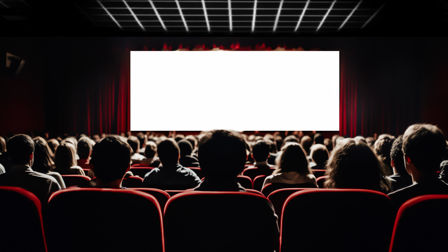Don't Just Participate at the Super Bowl
M&C Saatchi's ECD James Bray encourages brands to be doing more than just participating at the Super Bowl.
At this year's Super Bowl, some brands played it safe, but M&C Saatchi's ECD, James Bray, urges marketers to experiment with the event's advertising and avoid becoming just another cog in the machine.
Instead, he encourages brands and agencies to think about the ads from the event that impact us most - the ones that make audiences really think. Bray thinks that if you exercise a certain type of creativity and brutality, you may just secure a permanent audience.
When did airing a commercial during the Big Game somehow become advertising’s version of the participation trophy?
Why is it that brands aren’t there to win? Or, at least, why are 90% of them happy just to take a knee – at the biggest competitive event in America? Imagine the conversation Vince Lombardi and Bill Burnbach are going to have this Sunday from their graves, while rolling over and over and over.

Shockingly, under the brightest of lights, most brands won’t dig deep, won’t give 110%, won’t put their best foot forward and won’t leave everything out on the field.
Matter of fact, if CBS interviewed any one of the CMOs from their luxurious climate-controlled boxes, we’d hear something incredibly motivating like… “Well Jim, it’s been a long season. We’ve been through a lot of ups and downs. We didn’t really fight too hard to get here. But we asked lots and lots of people along the way. And now, here we are. You know, we’re just happy to be here. Win or lose, we’re really just happy.” Inspiring stuff.
Sadly, what was once a crowning achievement in our industry to air a commercial during the Super Bowl is no longer crowning, nor super. It simply is not the showcase of truly great storytelling that it once was.

Why is this? How did this happen? Well, to most marketers, the PR impressions of simply being on during the Big Game trumps the need for a great idea that actually separates and resonates with its audience.
Simply put. They’ve gotten more and more safe. They’d rather punt on firstdown than risk anything. But maybe that’s just it. They see a differentiating idea as risky. But a differentiating idea is anything but risky. It’s effective, clever and surprising.
When E-Trade had the surprising humility to laugh at the excessive media costs during the Super Bowl, they aired a monkey and two dimwits clapping out-of-beat to a horrible song for 30 seconds (below). The commercial then turned the corner from disruptive for disruptive sake and brilliantly pointed out… “We just wasted two million dollars…. What are you doing with your money?”
On the biggest stage, finally a brand flexed its conceptual muscles. It was more than ridiculous. It was smart. It was ridiculously smart. Like comedians Louis C.K., and George Carlin before him…they didn’t assume you’re an idiot. Instead, they assumed when they reveal a truth in a totally different and unexpected way, you’re going to be pleasantly surprised.
Sure, this element of surprise may require a second or two of thought, but when the audience “gets it,” it sticks with them all the way to the water cooler the next day.

At M&C Saatchi, we talk a lot about Brutal Simplicity of Thought. It’s our motto, our tagline, and our way of pushing for conceptual clarity. And, while I do believe simplicity has to be at the core of everything we marketers do, I’m beginning to think the brutal part is becoming more relevant.
Sure, it’s difficult to hone in on one clear, differentiating strategy. Sure, it’s difficult to turn that into a truly differentiating idea. But, it’s even more difficult, often painful, to get brands to be brutally honest about whether or not they’re really happy to just collect that damn participation trophy.
‘Cause, unlike with the teams playing this Sunday, fans are all too eager to switch their brand loyalties to be part of the winning team.
Connections
powered by
- Agency M&C Saatchi LA
- Executive Creative Director James Bray
Unlock this information and more with a Source membership.







 Membership
Membership


